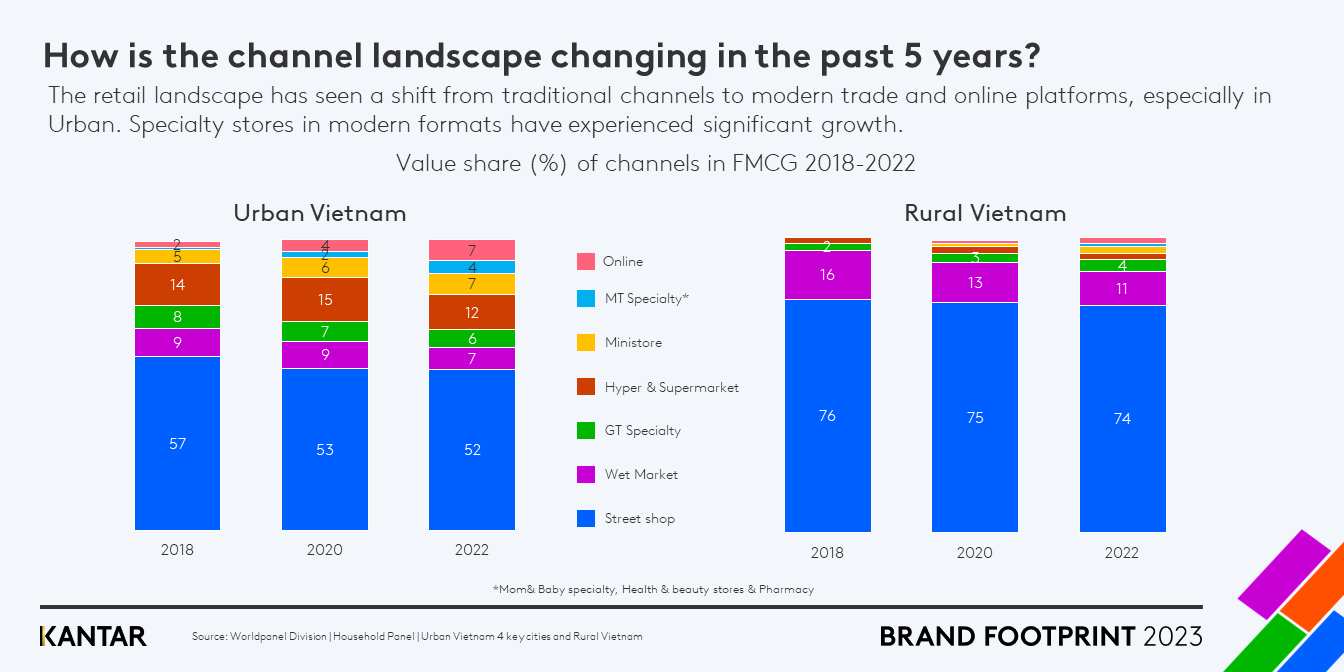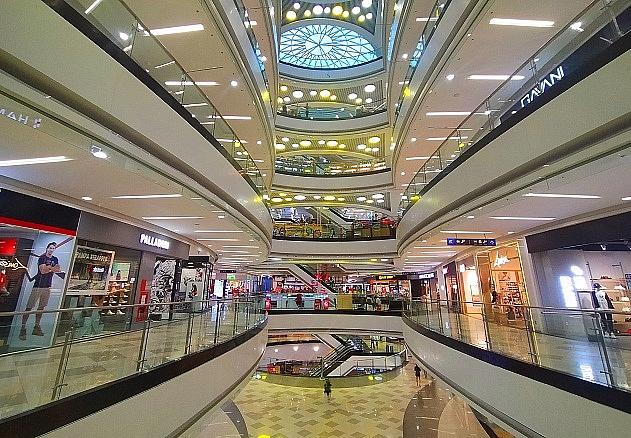According to Kantar’s Brand Footprint 2023 series report, which annually assesses the performance of the most chosen brands globally and in different markets, the evolution in Vietnam’s retail landscape was further accelerated by the Covid-19 pandemic, which not only changed the way consumers shop but also prompted retailers to adapt and innovate.
A significant post-Covid consumer behavior shift is the decrease in shopping frequency; a trend that grew more pronounced during lockdowns and continues in both urban and rural areas. As people lead busier lives, they’re shopping less frequently but making larger purchases. To retailers, foot traffic is reduced, but this is also an opportunity that they can improve the shopping experience, making each visit more valuable and memorable for consumers.
Over the past five years, the retail landscape in Vietnam, especially in urban areas, has undergone significant changes. Traditional channels like corner stores and wet markets have declined, making room for modern trade and online platforms. Within modern trade, certain channels such as minimarkets, specialty stores (e.g., mom and baby, health, beauty), and pharmacies have emerged as growth leaders. In rural areas, general trade remains dominant, but there’s a gradual shift towards modern trade and online platforms, suggesting potential for further transformation as both urban and rural consumers embrace modern retail formats and online shopping.

Consumers in today’s market have higher expectations for their shopping experiences. Urban and rural shoppers have distinct priorities when selecting stores, with urban shoppers valuing factors like product variety and accessibility, while rural shoppers seek new product offerings.
Moreover, shoppers now take longer to make decisions, seeking more information before purchasing, prompting retailers to invest in comprehensive product details and demonstrations. On the other hand, loyalty to one store is diminishing, as shoppers opt for different stores for various products, leading to diverse shopping channels. This has intensified competition among retailers and brands, requiring them to offer specialized experiences and cooperate to retain customer loyalty.
As a result, retailers are required to undergo a strategic transformation due to the changing landscape. This involves carefully evaluating the roles different channels play in the shopping journey to determine their impact on equity, volume, and revenue. Optimizing product assortments across various channels is crucial for an improved shopping experience.
Retailers need to tailor strategies and promotions to specific channels, recognizing that what works in one might not work in another. Embracing innovation and flexibility is essential to adapt to evolving consumer demands and trends for sustained growth in this dynamic environment.
As Vietnamese consumers become more discerning and open to new experiences, brands and retailers must not only cater to their immediate needs but also create experiences that resonate on a deeper level. Consequently, retailers must not only weather the challenges of change but emerge as leaders in a transformed retail landscape.









 Google translate
Google translate